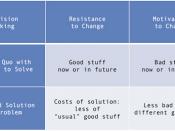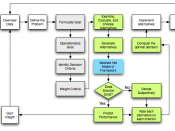Decisions made by groups when dealing with complex problems and issues occur everyday in the life of an organization. The decisions made by these groups can have serious, far-reaching consequences throughout the organization if not properly thought through. This is the reason for the existence of decision making models. Decision making models are logical, systematic, and methodical approaches to problem solving. Many decision making models exist. According to Lahti (1996), there are four group decision making models that can be identified. The models are the rational, political, process, and garbage can models. Each model possesses distinct advantages and disadvantages over the other models which is not the focus of this paper. The focus of this paper will be the analysis and real-world application of the rational model.
The rational model is the baseline against which other models are compared (Lahti, 1996). The model follows a scientific, methodical, and rational approach to decision-making.
The model follows a step-by-step process which decision makers use in the quest to solve a problem. The steps followed by the rational model, as defined by Robbins (2002, p.74) are 1) define the problem; 2) identify the decision criteria; 3) weigh the criteria; 4) generate alternatives; 5) rate each alternative on each criterion; and 6) compute the optimal decision.
The first step of the model involves the process of defining the problem or goal. The necessity of this step is underscored by the fact that an assumption of the model is that decision makers will the same frame of reference regarding the definition of the problem.
Decision makers in step two, are required to establish objective criteria to assess the solutions formulated in the first step. The criteria will also be used to evaluate the failure or success of the chosen solution.
Step three of the model...



Okay
Nicely written, maybe a little more information but I got the idea.
1 out of 1 people found this comment useful.